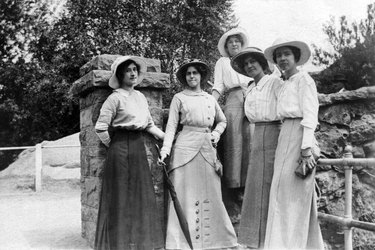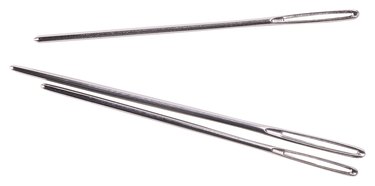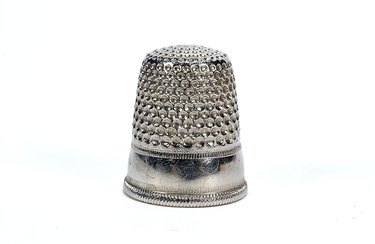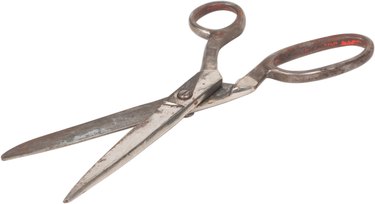
The American Colonial period spans the years 1492 to 1763, when the country's Revolutionary period began. Once cities started to establish themselves during the 17th and 18th centuries, and society life began to develop, dressmaking and tailoring services became indispensable to the well-dressed classes. While the selection of colonial dressmaking tools did not differ greatly from those which contemporary dressmakers employ, with the exception of the sewing machine, these tools were made of very different materials and manufactured differently than their modern counterparts.
Pins and Needles
Video of the Day

A Colonial dressmaker used pins both to secure dress pieces together for sewing and to tack up hems when her client was trying on an unfinished gown. Most pins dating from the 17th century were made from brass, and sometimes tin-plated. The heads of the pins consisted of a piece of wire wrapped around the pin shank.
Video of the Day
The needle was a critical tool for a Colonial dressmaker, since all the dressmaking had to be done by hand. Because the first factory for pin and needle manufacture in the Colonies was not established until the Revolutionary era, needles came from England. Handmade in the 17th century from brass, then mass-produced in factories, English-made needles were an essential part of a Colonial dressmaker's toolkit.
Thimble

Pushing a needle through layers of fabric requires some body armor, and Colonial dressmakers counted a thimble among their protective gear. Thimbles made in the 16th and 17th centuries were heavy, stubby cylinders, sometimes with caps, sized to fit around a dressmaker's fingertip where she could use the metal to push the end of her needle through a seam. Earlier thimbles often had a brass lining. Thimbles from the later 17th century featured a two-piece construction whereby one strip formed the sides and another piece of metal formed the cap; the maker would "braze"--weld--them together at the joint. These thimbles had taller sides for more finger coverage and a rolled edge for comfort.
Shears

Every Colonial dressmaker had one or more pairs of dressmaking shears in her toolkit. Each Colonial trade used specialized shears specific to the work involved; tailors, dressmakers, and weavers often used shears called "pelican-billed" by virtue of the rounded shape of the shafts. This shape allowed craftspeople to lift and separate the layers of cloth to facilitate precise cutting of expensive fabrics. Because no one manufactured shears in the Colonies, with the first factory being established after the Revolutionary war, dressmakers used English-made shears. The best of these were made of shear steel in Sheffield, England after 1740.